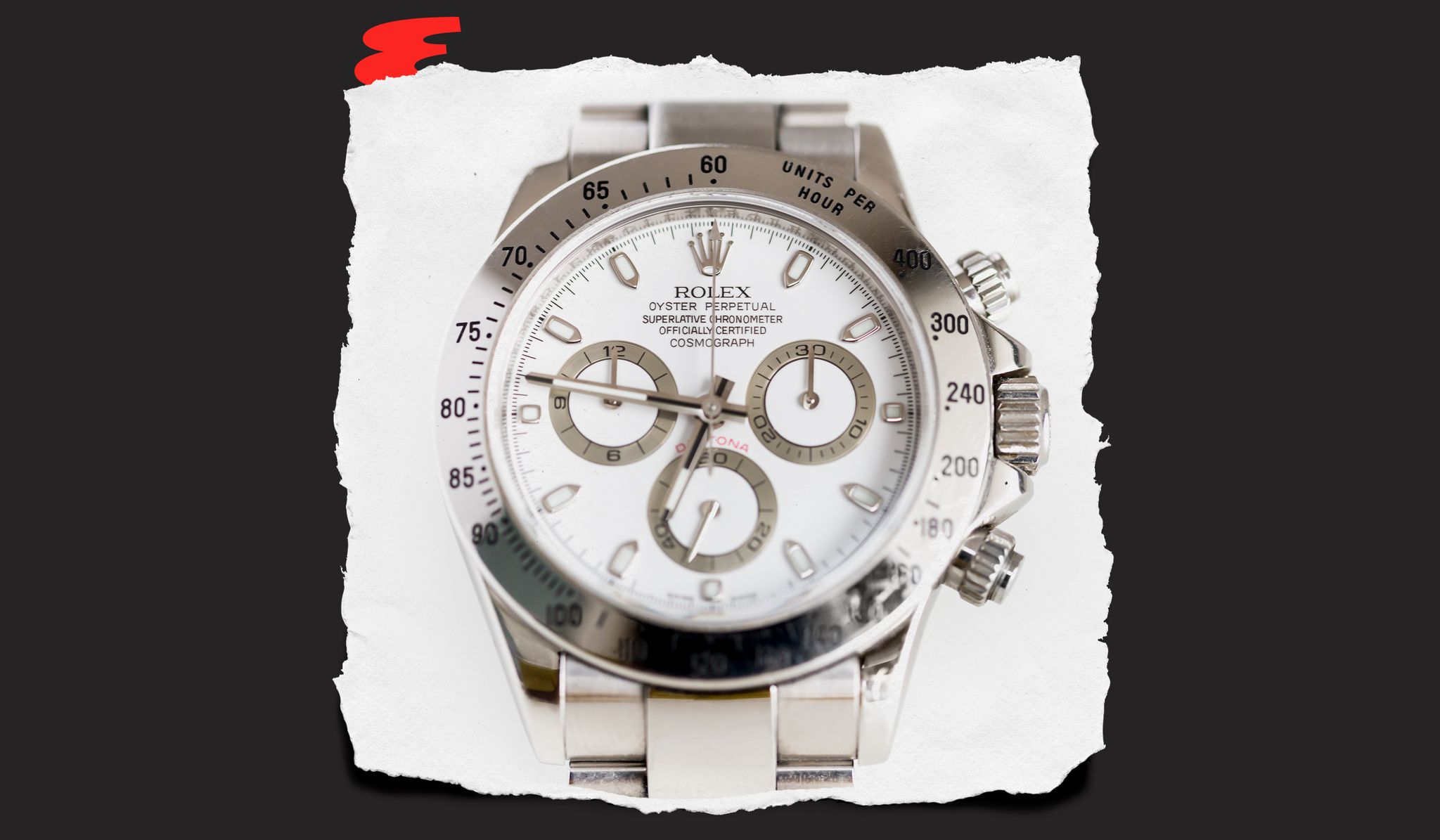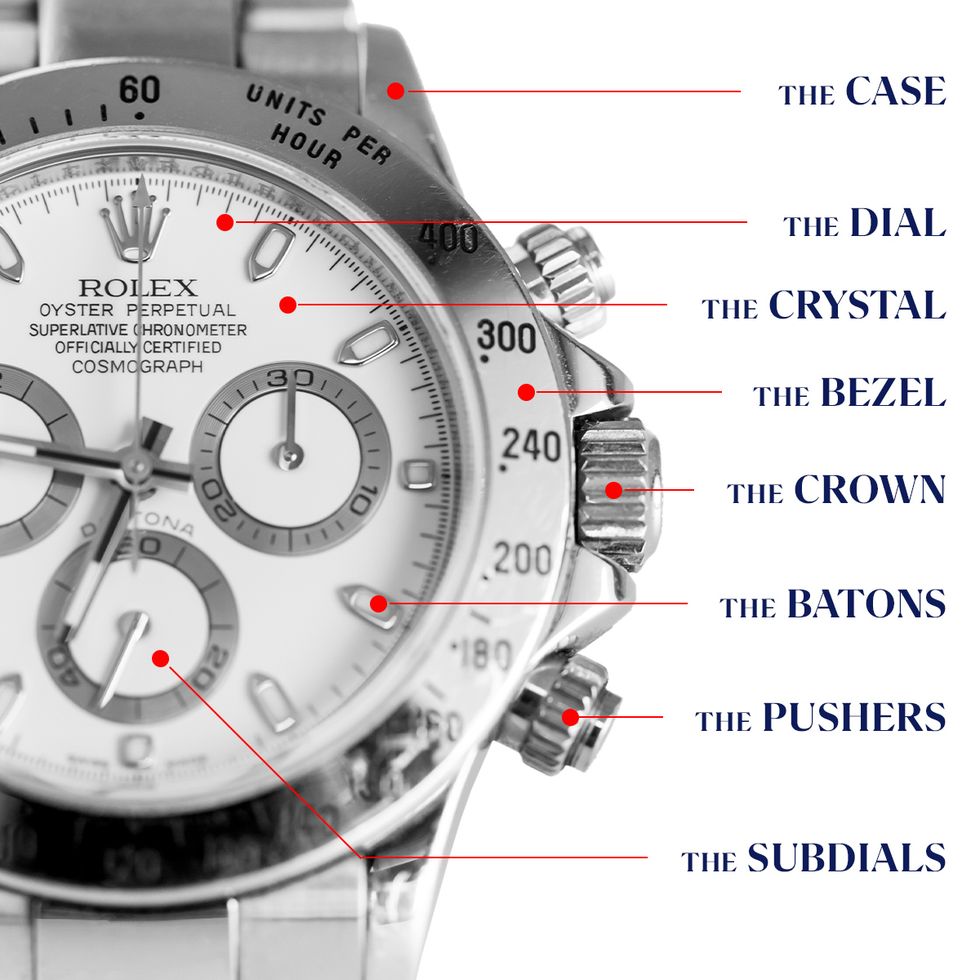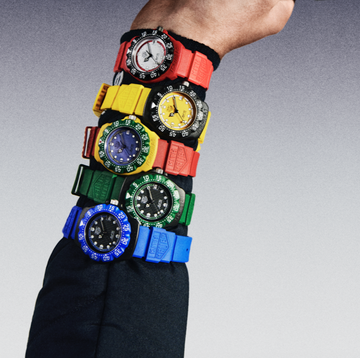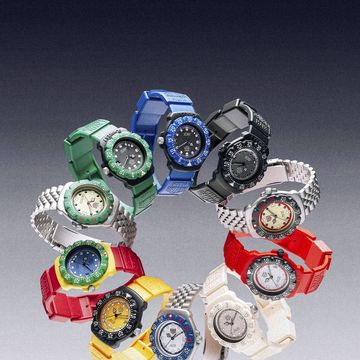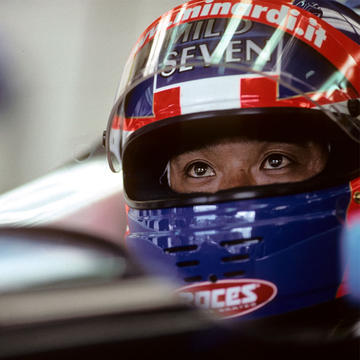Whether you're simply using it to tell the time of day or tracking lap times on the race track like a midcentury motorsports enthusiast, understanding all the different components of your watch—and, crucially, how to talk about them—will make your life that much easier. So, here, we've compiled a list of the most common elements, and explained what they are in plain terms. Easy enough.
THE ANATOMY
THE CASE: The body that both holds and protects the watch movement. It’s often made from one piece of metal and includes the lugs.
THE DIAL: Also known as the face, it displays the time with markings and subdials.
THE CRYSTAL: The covering that protects the dial. It’s typically made of glass, plastic, or synthetic sapphire (i.e., crystallised aluminium oxide).
THE BEZEL: The outer ring that holds the crystal in place. Some functioning bezels (toothed for easy grip) rotate in one direction to allow the wearer to mark elapsed time.
THE CROWN: Also known as the stem, it’s often found at the 3:00 position and used to adjust the settings. With manual watches, the crown is used to wind the mainspring.
THE PUSHERS: The buttons used to start and stop the basic chronograph functions. The top pusher is typically used to start and stop the stopwatch function; the bottom pusher resets it to zero.
THE BATONS: The rectangular bars affixed to a watch dial in place of numerals to mark the hours.
THE SUBDIALS: Usually found on the dials of chronographs, these small circles are used to indicate time elapsed in varying measurements.
